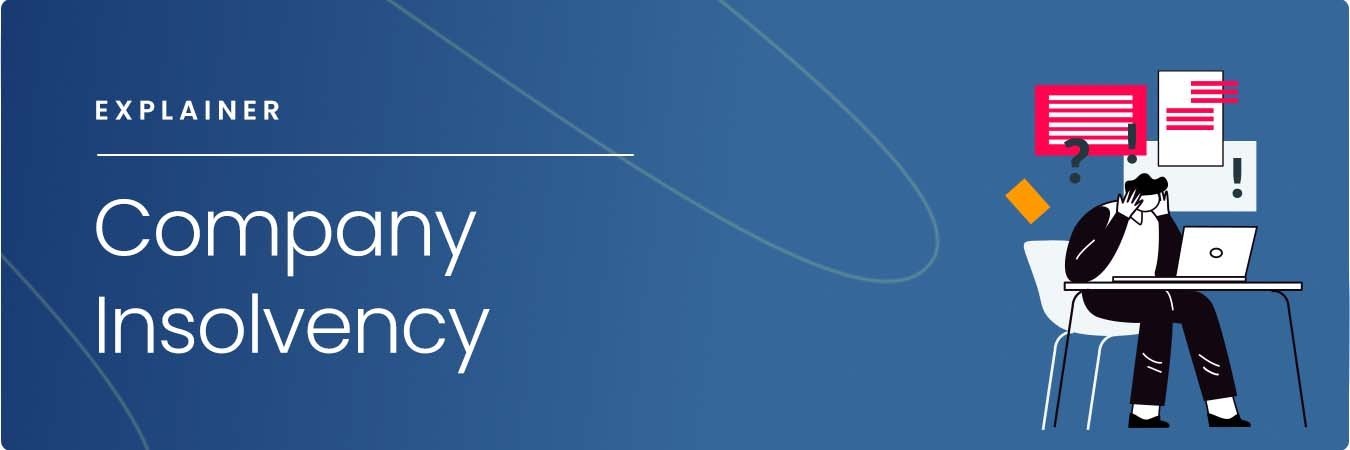The Single Strategy To Use For Insolvency Practitioner
The Single Strategy To Use For Insolvency Practitioner
Blog Article
Some Ideas on Insolvency Practitioner You Should Know
Table of ContentsThe Ultimate Guide To Insolvency PractitionerLittle Known Questions About Insolvency Practitioner.Get This Report about Insolvency PractitionerSome Known Details About Insolvency Practitioner Not known Facts About Insolvency PractitionerHow Insolvency Practitioner can Save You Time, Stress, and Money.A Biased View of Insolvency Practitioner
Insurance is kept an eye on and controlled by state insurance coverage departments, and among their key goals is protecting policyholders from the risk of a firm in financial distress. When a firm gets in a duration of financial trouble and is not able to fulfill its obligations, the insurance policy commissioner in the company's home state initiates a processdictated by the laws of the statewhereby efforts are made to aid the firm restore its economic footing.If it is figured out that the company can not be restored, the firm is proclaimed insolvent, and the commissioner will ask the state court to get the liquidation of the company. The insurance policy commissioner, either selected by the governor or chosen, heads the state insurance policy division and monitors and regulates insurance coverage activity within the state.
[Back] By obtaining control of a firm, the commissioner (or the insurance division) is, by legislation, the rehabilitator or liquidator of the business. In this capability, the commissioner or division takes control of the business's procedures. As opposed to do so directly, the commissioner might retain a special deputy receiver to monitor the company's activities - Insolvency Practitioner.
Insolvency Practitioner - An Overview
The receiver manages a bookkeeping of the business's assets and liabilities and provides the estate of the company. In doing so, the receiver looks for to make best use of the company's assets, move them to money, and after that distribute that cash money to lenders having valid insurance claims versus the insurance company according to repayment top priorities specified by state regulation (in all states, insurance policy holders are priority complaintants whose insurance claims are paid before those of basic lenders).
All insurance provider (with limited exceptions) accredited to offer life or medical insurance or annuities in a state must be participants of that state's warranty organization. The warranty organization cooperates with the commissioner and the receiver in pre-liquidation planning. As soon as the liquidation is gotten, the warranty association supplies protection to the business's insurance holders that are state locals (up to the degrees defined by state lawssee below; any kind of advantage quantities above the warranty asociation benefit degrees end up being claims versus the company's remaining assets).
Everything about Insolvency Practitioner
The above coverage levels apply independently for each insolvent insurer. When an insurance firm fails and there is a deficiency of funds required to fulfill the obligations to insurance holders, state warranty organizations are activated. Guaranty associations have subrogation rights to an in proportion share of the properties continuing to be in the fallen short insurer.
Second, insurance companies doing business in that state are assessed a share of the quantity required to fulfill the section of the guaranty associations' protected insurance claims not otherwise moneyed with estate properties. The quantity insurance firms are examined is based on the amount of premiums that they gather next page in that state. The National Organization of Life and Health Insurance Guaranty Organizations (NOLHGA) is made up of the life and health insurance guaranty organizations of all 50 states and the Area of Columbia.
NOLHGA develops a task force of depictive warranty associations to deal with the insurance policy commissioner to create a plan to protect policyholders. To find out more on NOLHGA's function in the process, see "What Is NOLHGA?" and "The Safeguard at Job." [Back]
The Only Guide for Insolvency Practitioner

Predictive protection by aiding you pick the ideal customers and the appropriate markets to stay clear of uncollectable loan to begin with, many thanks to acute financial evaluation. Thorough market intelligence, giving you with 360-degree exposure on business sectors and impending troubles. It would be a simplification to assume a trade credit score insurance begins and finishes with costs and pay-outs.

Getting The Insolvency Practitioner To Work
Why does a company enter into insolvency? There are a number of factors why a company might enter right into insolvency.
Various other reasons for insolvency consist of fraudulence, mismanagement, and unforeseen prices. Bankruptcy can additionally lead to work losses and the closure of companies.
Top Guidelines Of Insolvency Practitioner
This can have severe effects for the firm, its stakeholders, creditors and the economic climate. The business may be forced to sell assets, lay off staff or even shut down. This can have a knock-on effect on the neighborhood community and the economy all at once. Creditors may be left out of pocket and the firm's investors may see their Home Page financial investment go away.
This can happen for a number of factors, consisting of bad monetary administration, unforeseen expenses, or a modification in the marketplace. If a firm is financially troubled, it may be forced to shut down or sell off properties to pay financial institutions. This can have a significant impact on the business, staff members, and investors.
Why does a company get in right into insolvency? There are a number of factors why a business may get in into bankruptcy.
Examine This Report on Insolvency Practitioner
Various other factors for bankruptcy consist of fraudulence, mismanagement, and unanticipated costs. Insolvency can likewise lead to task losses and the closure of services.
The business may be forced to sell assets, lay off staff or even close down. Creditors may be left out of pocket and the firm's investors may see their investment disappear.
Report this page